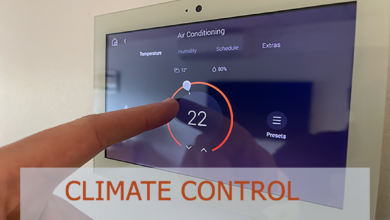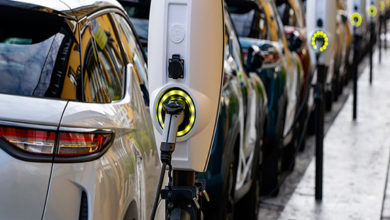Hydropower: All you need to know 2024

Hydroelectric power
Hydropower is one of the oldest and most reliable of all renewable energy sources. It works by capturing energy emanating from flowing water sources and generating electricity.
It’s basically a small stream. or a large river Moving water has kinetic energy that can only be converted into electricity using turbines and generators.
The Science Behind Hydroelectricity
Hydropower works on the principle of converting the kinetic energy of flowing water into electrical energy with the help of mechanical energy conversion.
This process begins when water begins flowing through a dam or obstruction. to drive the turbine The rotation of the turbine creates mechanical energy. which the generator will convert into electrical energy
Historical Overview of HDP
Hydropower has been in use for several millennia. Ancient civilizations harnessed the power of flowing water to run mills and grind grain.
Then came the 19th century, and HDP stepped into the leading roles of the Industrial Revolution-machinery and lighting in people’s homes.
Now, in these modern times, HDP still does much to contribute to the global energy mix by supplying clean, renewable electricity to millions of people.
Key Components of a Hydropower Plant
The major components of a regular hydropower plant include a dam, reservoir, turbine, and generator. The dam regulates the flow of water, enabling it to accumulate in the reservoir area.
When the water is discharged, it is directed to the turbine, consequently rotating it. This mechanical energy is then transmitted by the generator as electricity to the power grid.
Types of HD Plants
Pumped Storage Hydropower
Pumped storage hydro is an unusually robust form of energy storage. During low-demand periods, water gets pumped from a low reservoir to a high reservoir, and when demand rises, the water is released to flow back to the low reservoir, passing through the turbines to generate electricity. This acts like a large battery that stores energy for some time when it will be used.
Reservoir-Based
In contrast, reservoir-based hydropower plants are achieved by constructing a dam and a big reservoir. The reservoir stores water, subsequently released when demand arises to generate power. This type of hydro is very reliable since one can control the water flow even in dry seasons.
Run-of-River
Run-of-river hydropower stations are those involved in generating electricity depending on the natural flow of a river.
These kinds of plants require no big artificial reservoirs compared with conventional hydropower plants. That makes them more environmentally friendly in the proper sense of the term: with minimal environmental impacts on the ecosystem.
HDP Advantages
Low Operating Costs
Once built, the cost to run a hydropower plant is minimal. Water, the fuel, falls freely from the sky. Maintenance is not so expensive compared to other sources of power, making hydropower one of the cheapest ways of coming up with electricity for use in the long run.
Renewable Energy Source
Perhaps one of the greatest advantages of hydropower is that it represents a renewable source of energy. For as long as the water cycle continues, we can harness the energy of flowing water. Hydropower does not deplete natural resources and does not depend on fossil fuels, hence becoming a very sustainable option for the future.
HDP Environmental Impact of
Potential Environmental Concerns
However, some environmental challenges accompany hydropower. Building the necessary dams and reservoirs disrupts local ecosystems by obstructing fish migration and water quality. Some projects have caused the forced migration of communities and wildlife.
Positive Environmental Contributions
It has a very crucial role in reducing the emission of greenhouse gases. The substitution of hydropower generation reduces fossil fuel-based generation and helps reduce climate change. Hydropower plants can also be designed to create habitats for aquatic life in the reservoirs.
The Global Energy Mix
Hydropower accounts for approximately 16% of the total global energy produced and is one of the leading renewable sources of electricity.
It is the biggest source of renewable energy that dwarfs the other viable alternatives in such categories as the use of wind and solar power. China, Brazil, and Canada are among the leading countries in the production of hydroelectric energy.
The main countries that produce hydroelectric power
China is the world’s largest producer of renewable hydropower. With large-scale projects such as the Three Gorges Dam, Brazil, Canada and the United States Each has significant potential in the field of hydropower.
All listed countries have invested heavily in HDP infrastructure, recognizing the importance of sustainable energy..
Economic Benefits of Hydropower
Job Creation
Finally, the development of hydropower projects creates several jobs: the first bunch involved in putting up the infrastructure and later during its running and maintenance phases. These jobs are often located far from city centres. This creates economic opportunities in outlying regions where there may be few jobs.
Economic growth in rural areas
Hydropower projects in the process can promote economic development and drive rural development further. A well-functioning rural HDP requires infrastructure such as roads, bridges and transmission lines, and these in themselves can be beneficial. For local communities or rural areas…
HDP technology innovation
Advances in turbine design
Recent improvements in turbine design have increased the efficiency of hydroelectric plants. Modern turbines efficiently convert kinetic energy into electrical energy. This contributes positively by eliminating energy wastage and increasing production levels.
Micro and Small HDP Systems
There is a high demand for micro and small HDP systems, particularly the most remote ones. These plants generate electricity on a smaller scale and provide power to communities that are beyond the reach of the main power grid.
Hydropower and Climate Change
Role in Reducing Carbon Emissions
Hydropower has become one of the most important ways to reduce carbon emissions. By displacing fossil fuels with clean and renewable energy, HDP mitigates climate change impacts. It is very crucial to many countries’ policies in reducing carbon.
Case Studies: Successful Hydropower Projects
Three Gorges Dam, China
The Three Gorges Dam is the Earth’s largest HDP project, generating the most electricity of any power station and sending power to millions of people in China.
It also, to a large extent, plays a role in flood control and promoting shipping along the Yangtze River.
Another example of a successful HDP project can be taken from the Itaipu Dam, which lies across the border between Brazil and Paraguay.
A large amount of electricity is given to both countries by this dam; it has great importance with regard to renewable energy goals.
Future Prospects of Hydropower
Emerging markets especially have high potential in HDP, particularly in Africa and South-East Asia. These regions are only now beginning to invest in HDP to meet their growing energy needs while at the same time reducing carbon emissions.
Potential for Growth in Developed Countries
There is scope for considerable hydropower development even in the developed world, through the uprating of infrastructure, storage facilities, and small-scale projects.
Government Policies and Hydropower
Regulatory Frameworks
Government policy is one of the key factors for the development of HDP.
READ MORE ABOUT SMART GRIDS ENERGY
FAQs
What is the lifespan of a typical hydropower plant?
A hydropower plant of typical design, if well maintained, can operate with ease for 50 to 100 years or more. Much of the infrastructure has been designed to last and be replaced piecemeal over time, much like turbines and generators are very replaceable.
How does hydropower compare to solar and wind energy?
Hydropower is also much more reliable and would stand a better chance of supplying constant electricity compared to solar and wind, which are variables of meteorology. On the contrary, solar and wind can be much more versatile and more widely applicable.
Can hydropower be used in drought-prone areas?
In addition, hydropower may not easily be affected in areas where drought may attack, due to the requisite availability of plenty of water. Other technologies like pumped storage can be used to help go against this through water storage during wet periods for use during other times.
What are the biggest hydropower plants in the world?
The Three Gorges Dam in China is the largest hydropower plant in the world, followed by the Itaipu Dam on the Brazil-Paraguay border and the Xiluodu Dam in China.
Is hydropower safe for aquatic life?
Hydropower can thus change aquatic life in terms of altering fish migration, but modern designs are already well-equipped with fish ladders and bypass systems in order to avoid these impacts, meaning more research has to be done to improve technologies.
Conclusion
Hydropower is a powerhouse in the world’s energies. It can generate clean, renewable electricity, a big player in the fight against climate change with every product. But it also comes with its side of challenges, major ones having to do with environmental and social concerns. Continuing innovation and efforts are being made to address these challenges, meaning hydropower will play an even greater role in our sustainable energy future.




